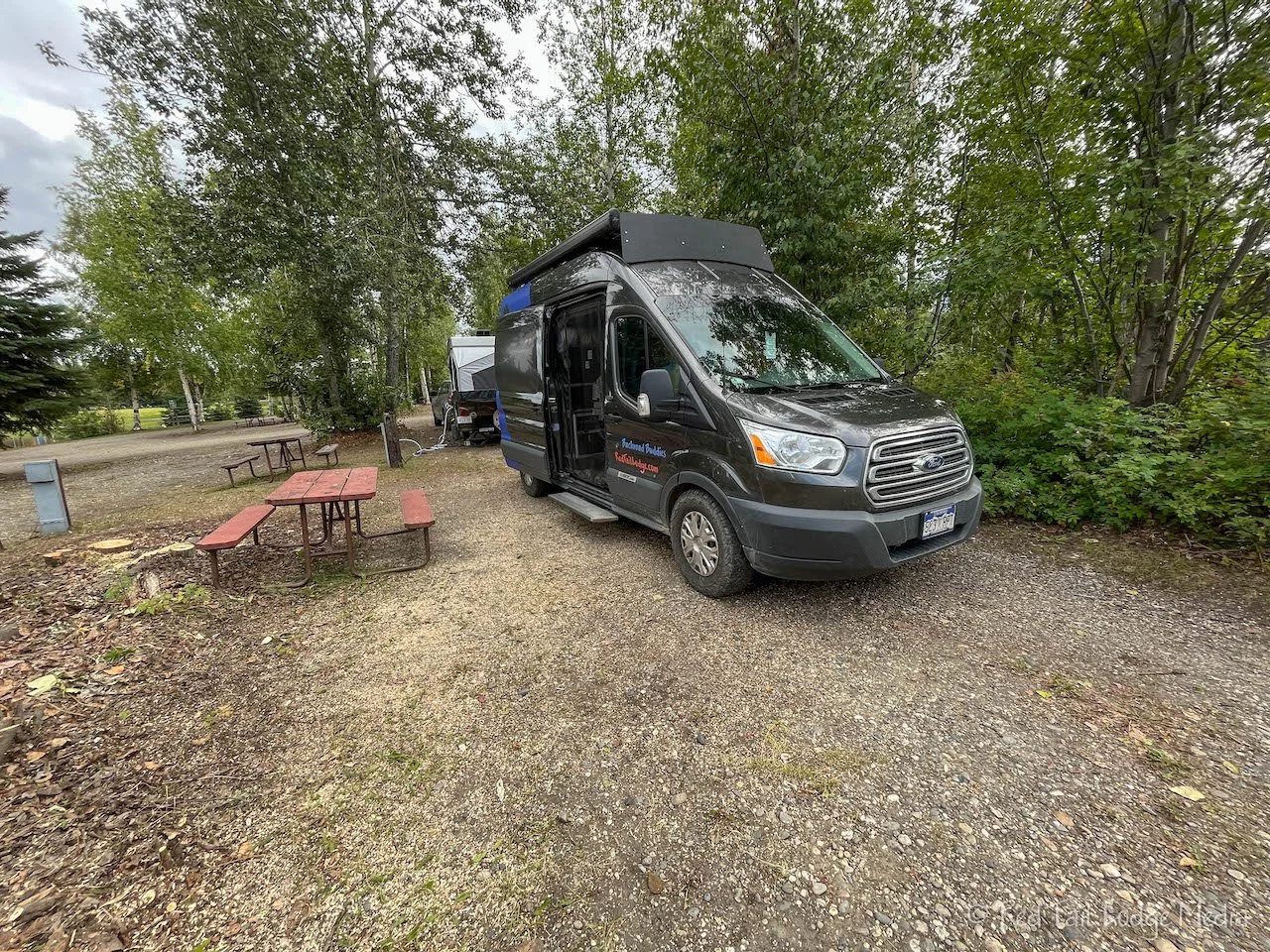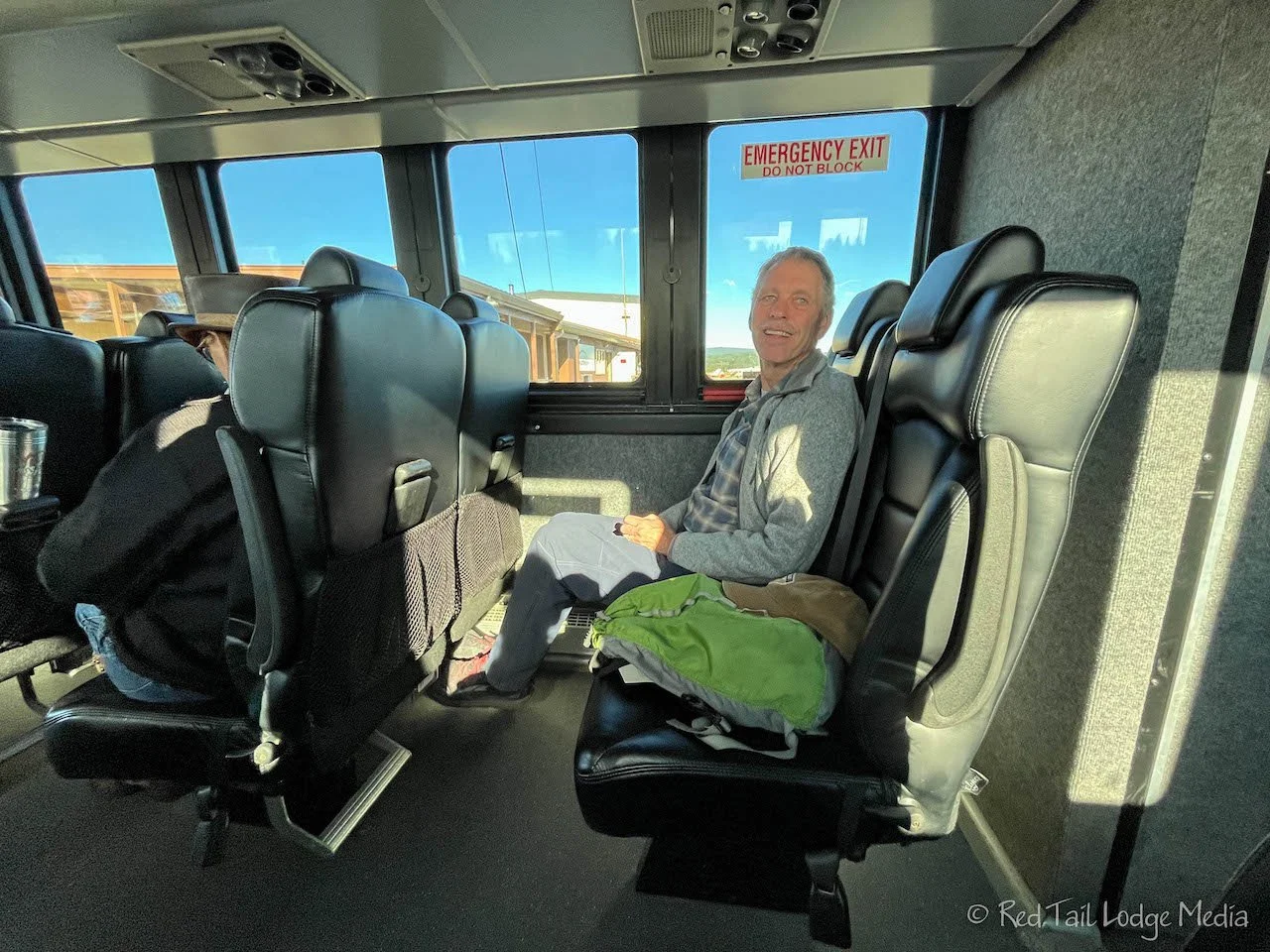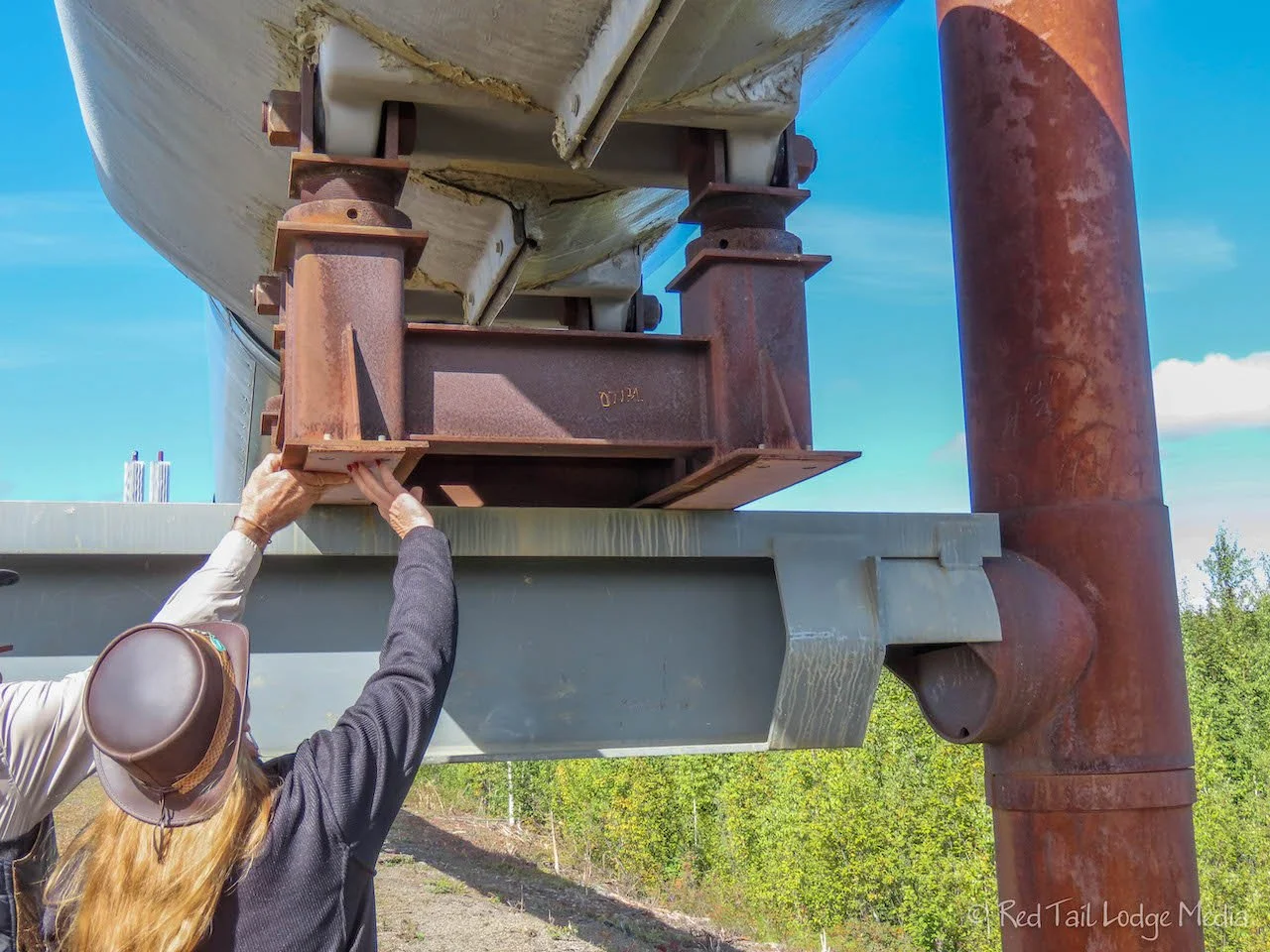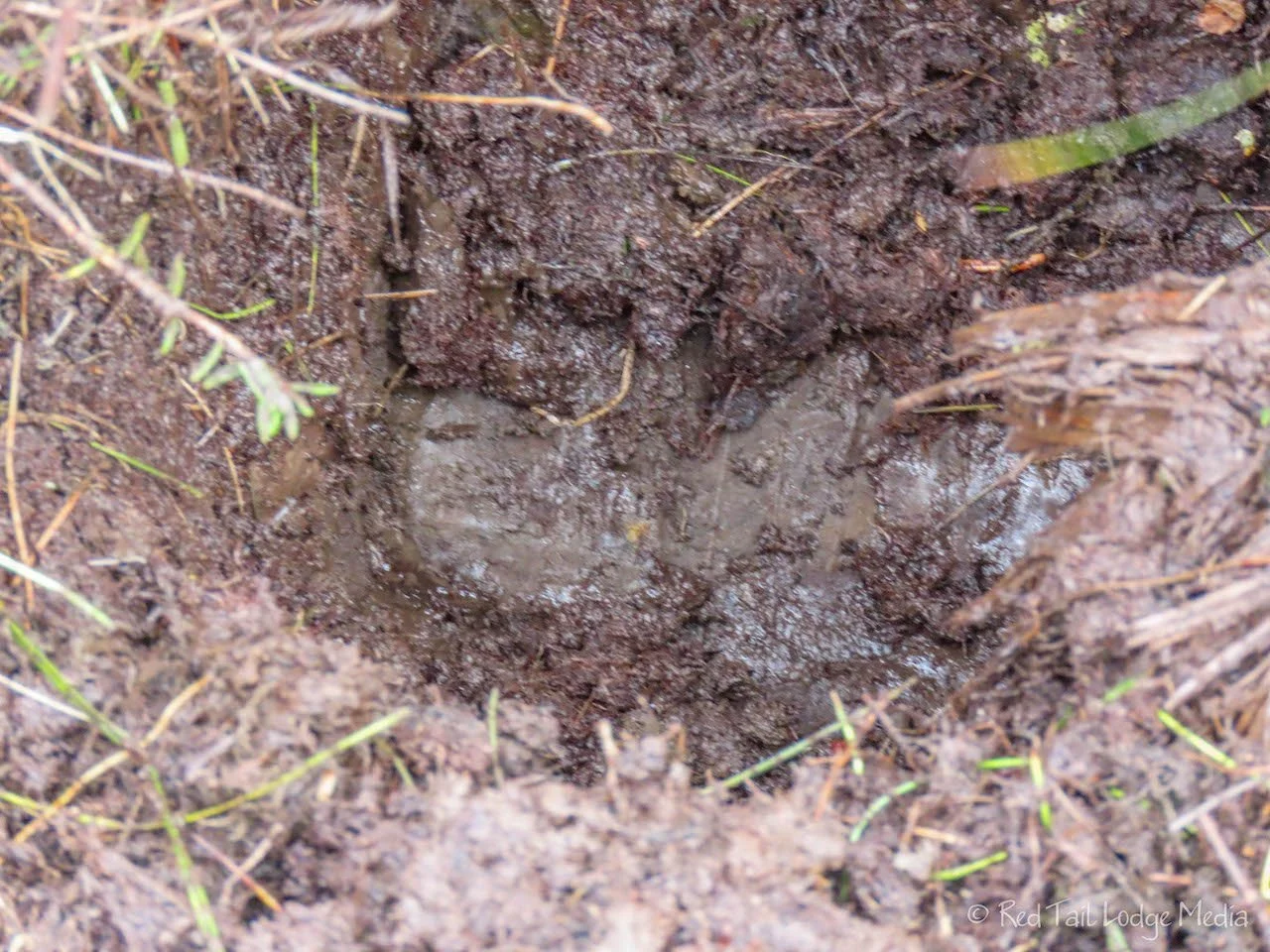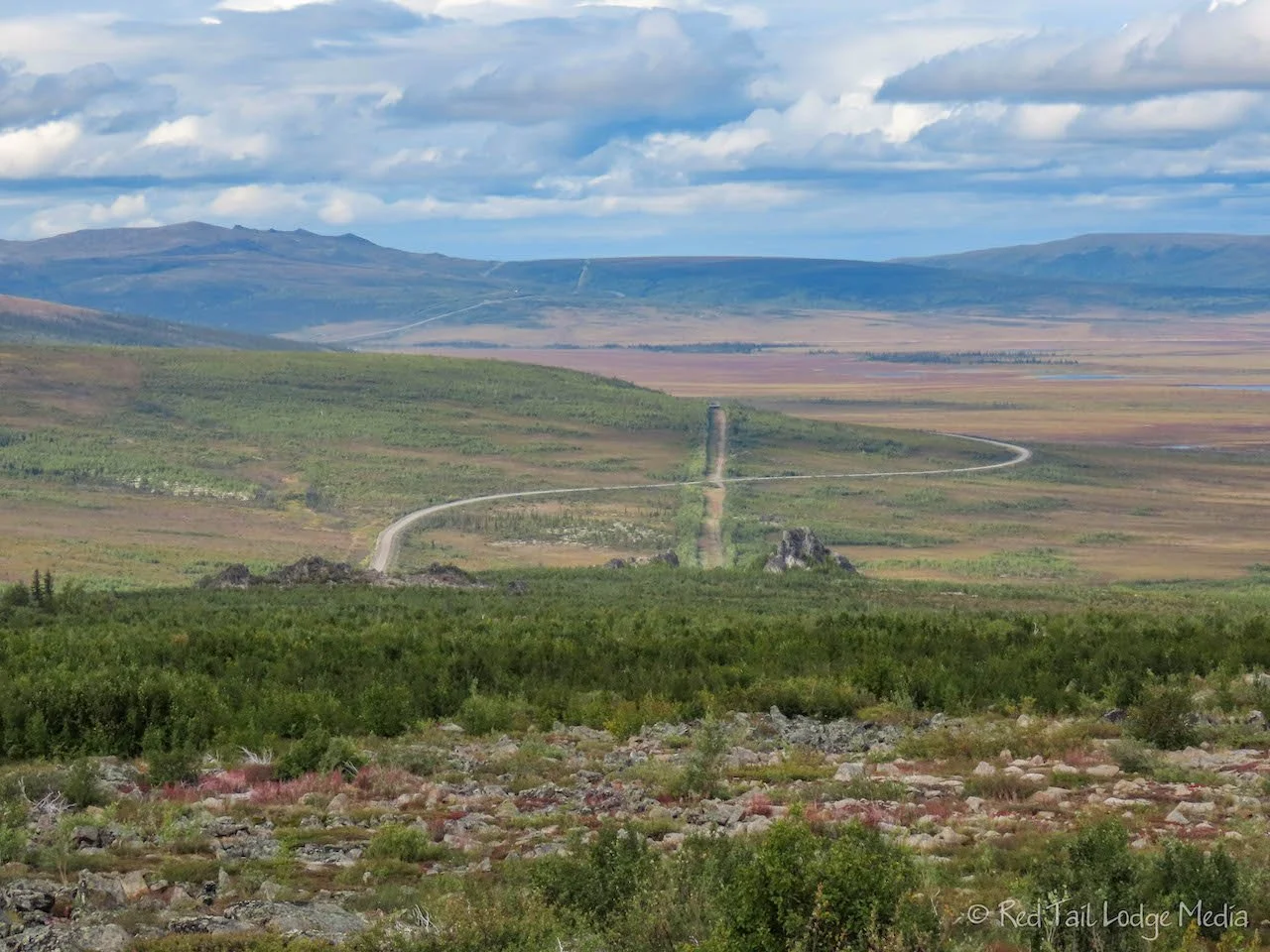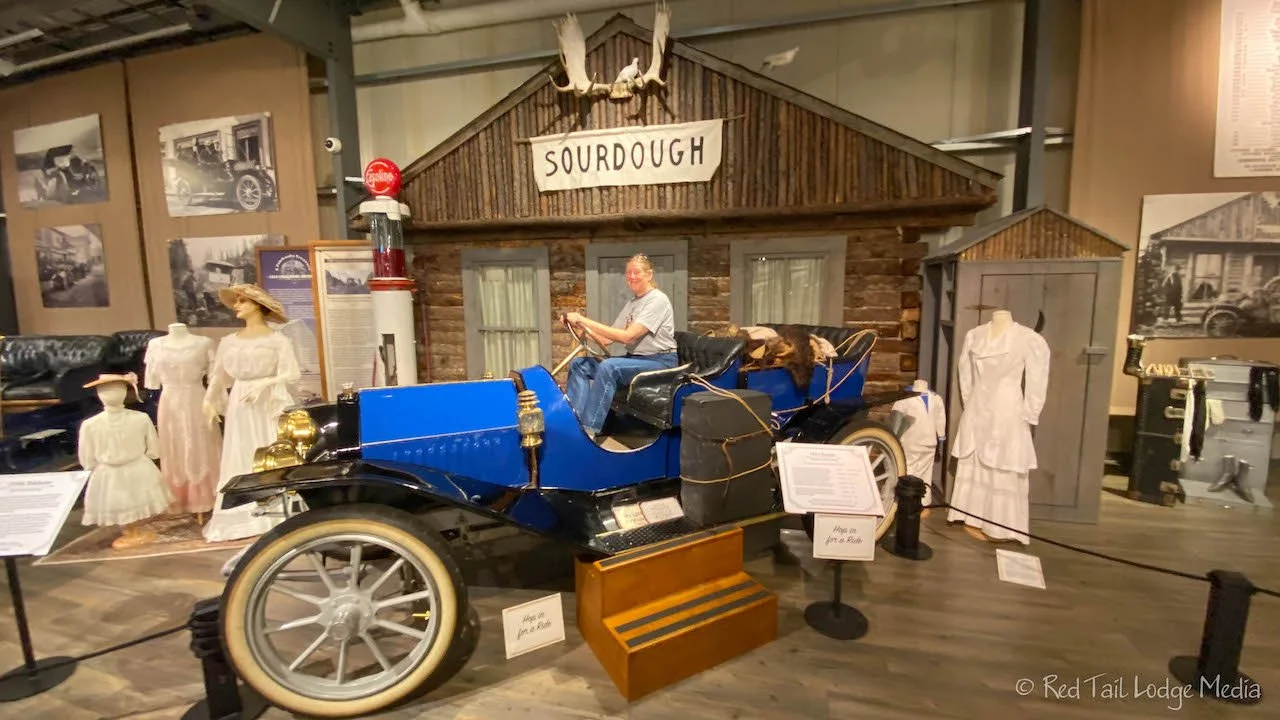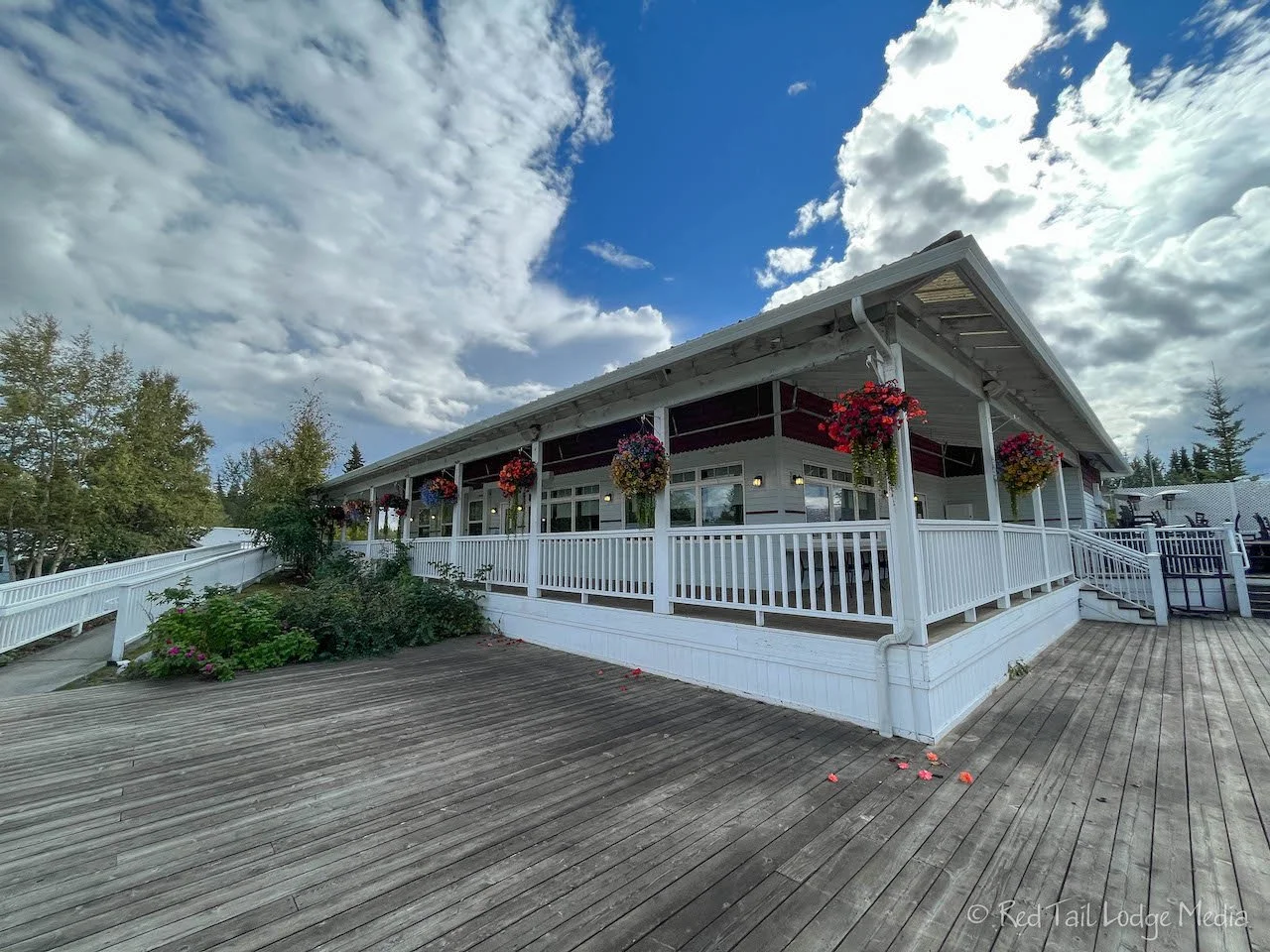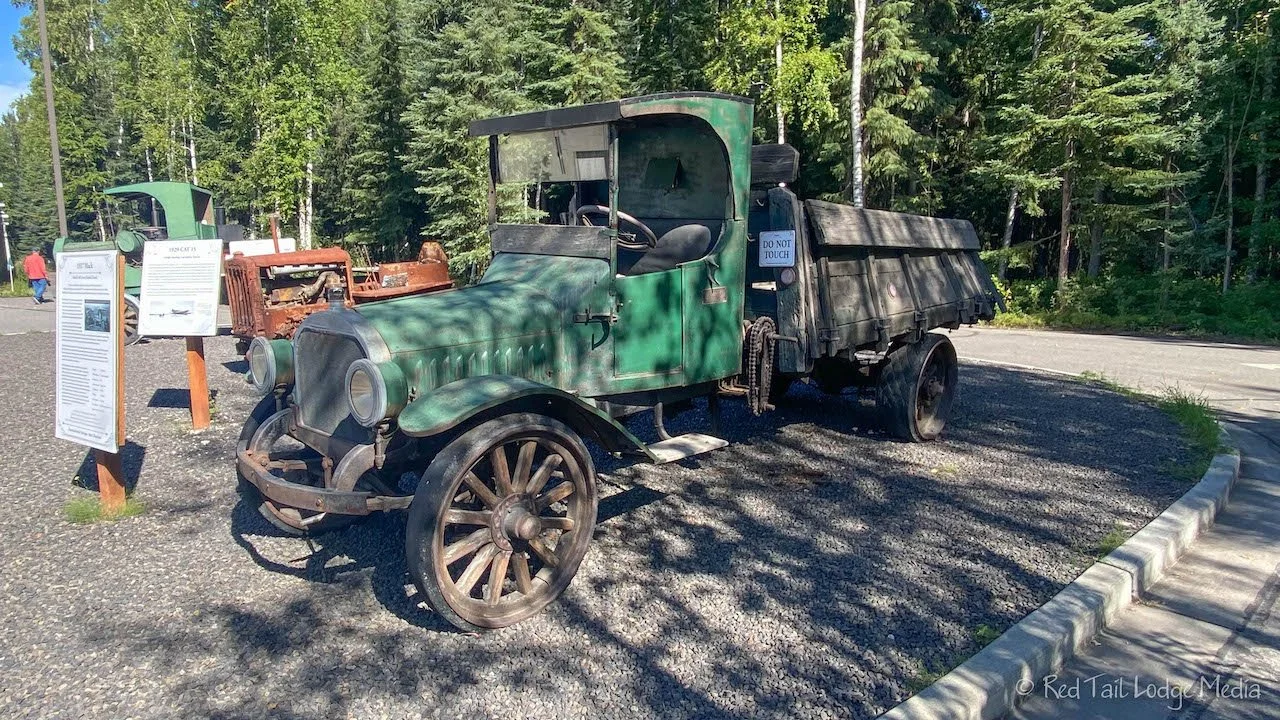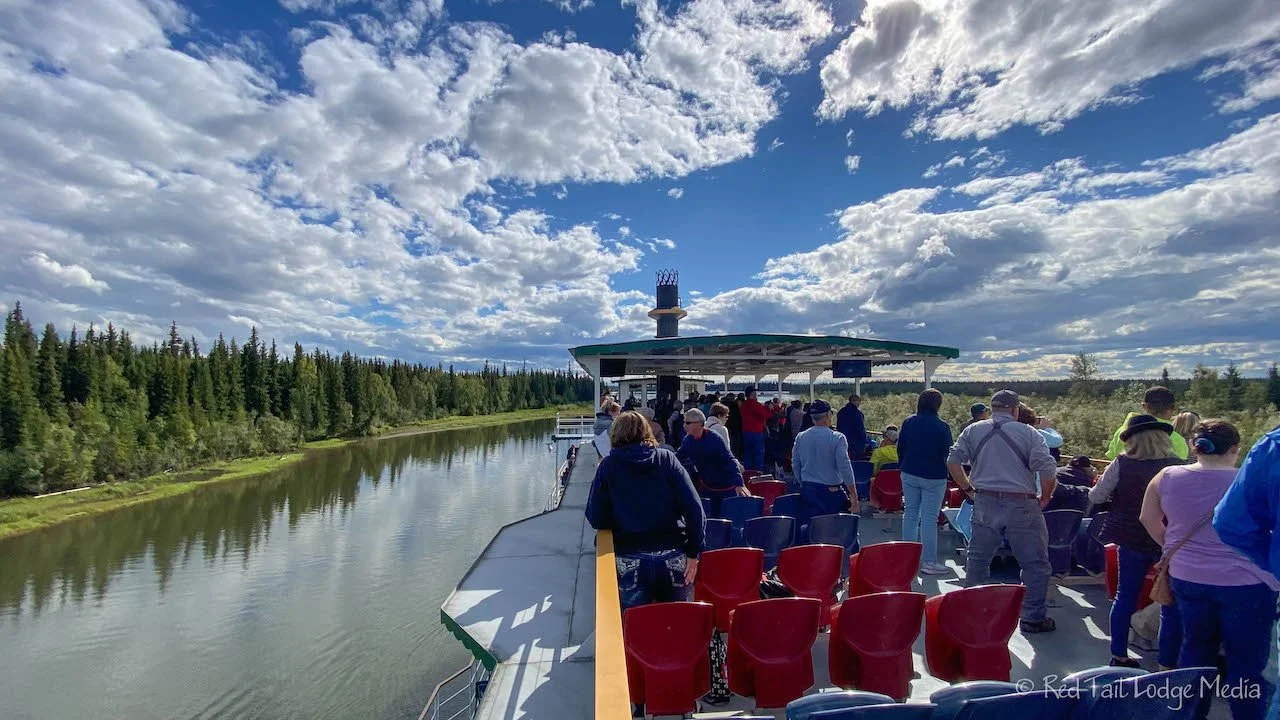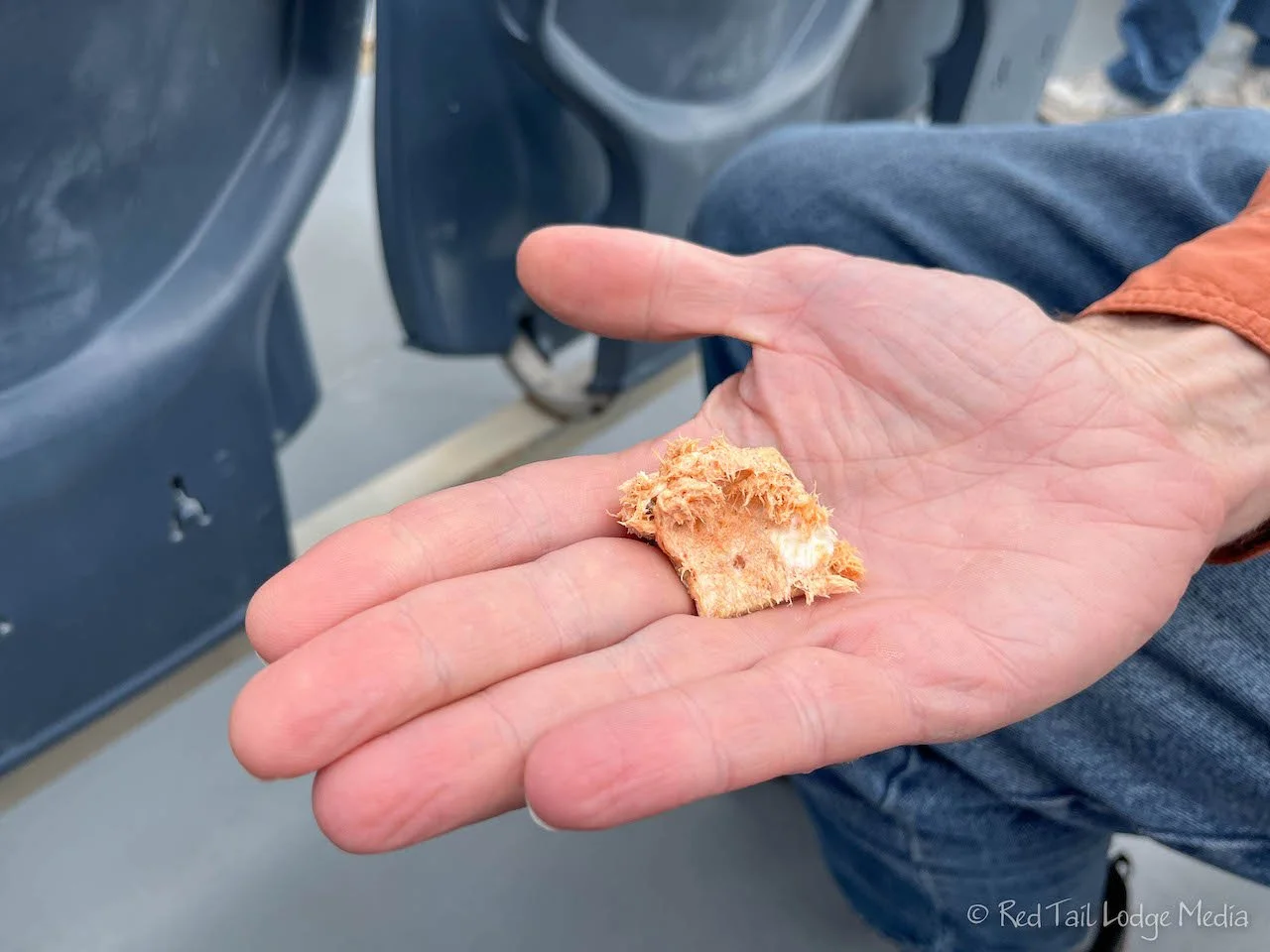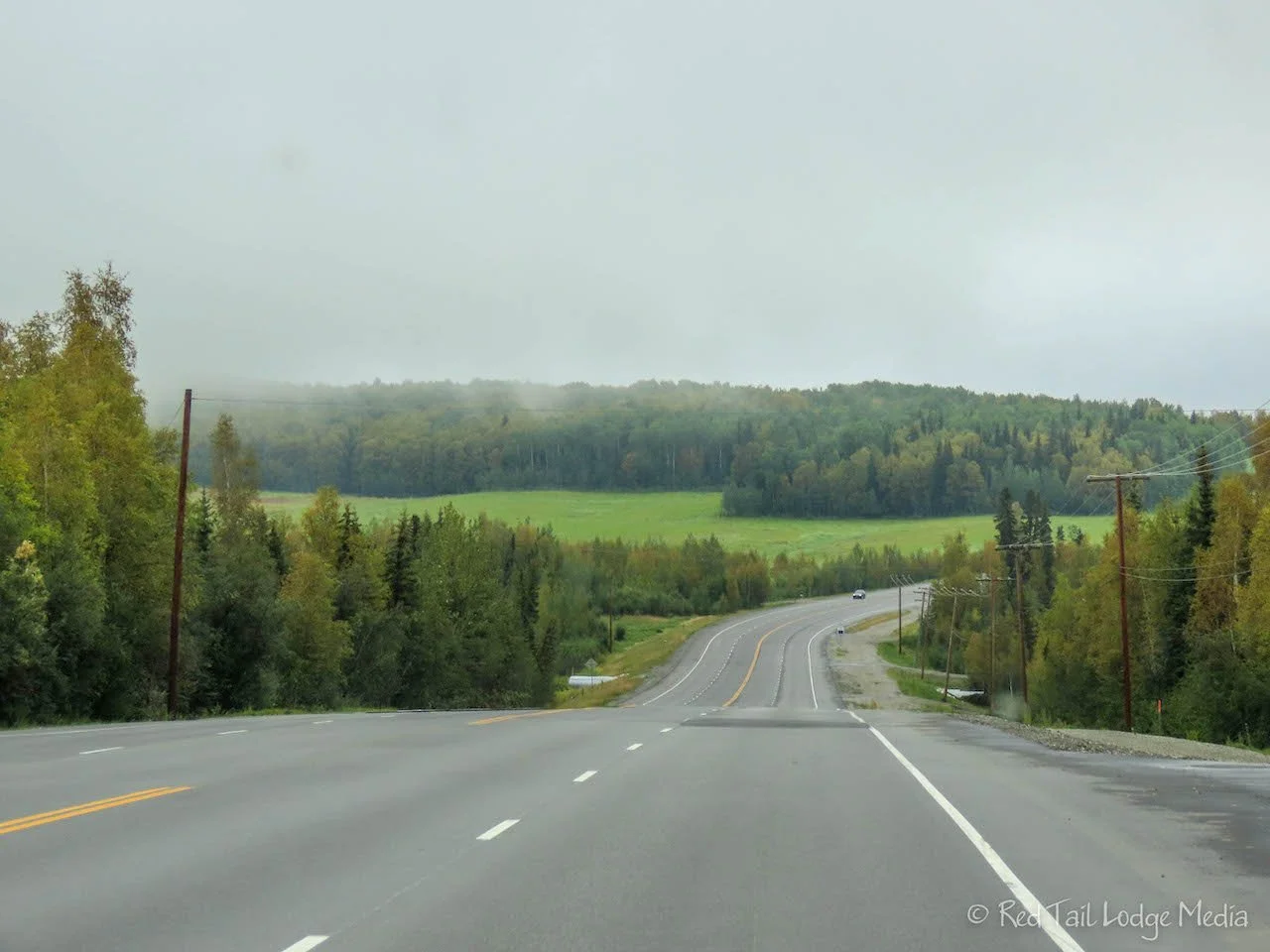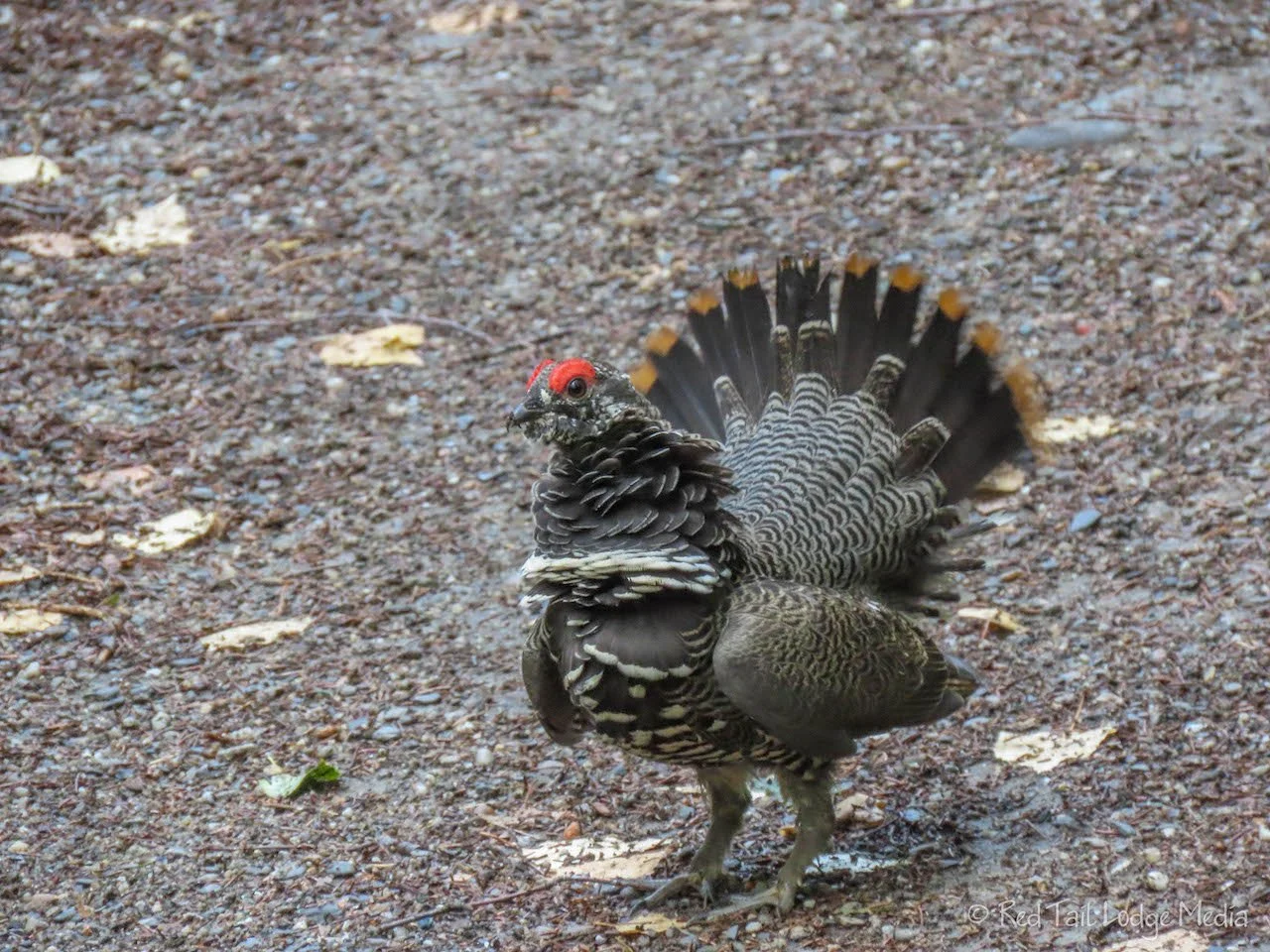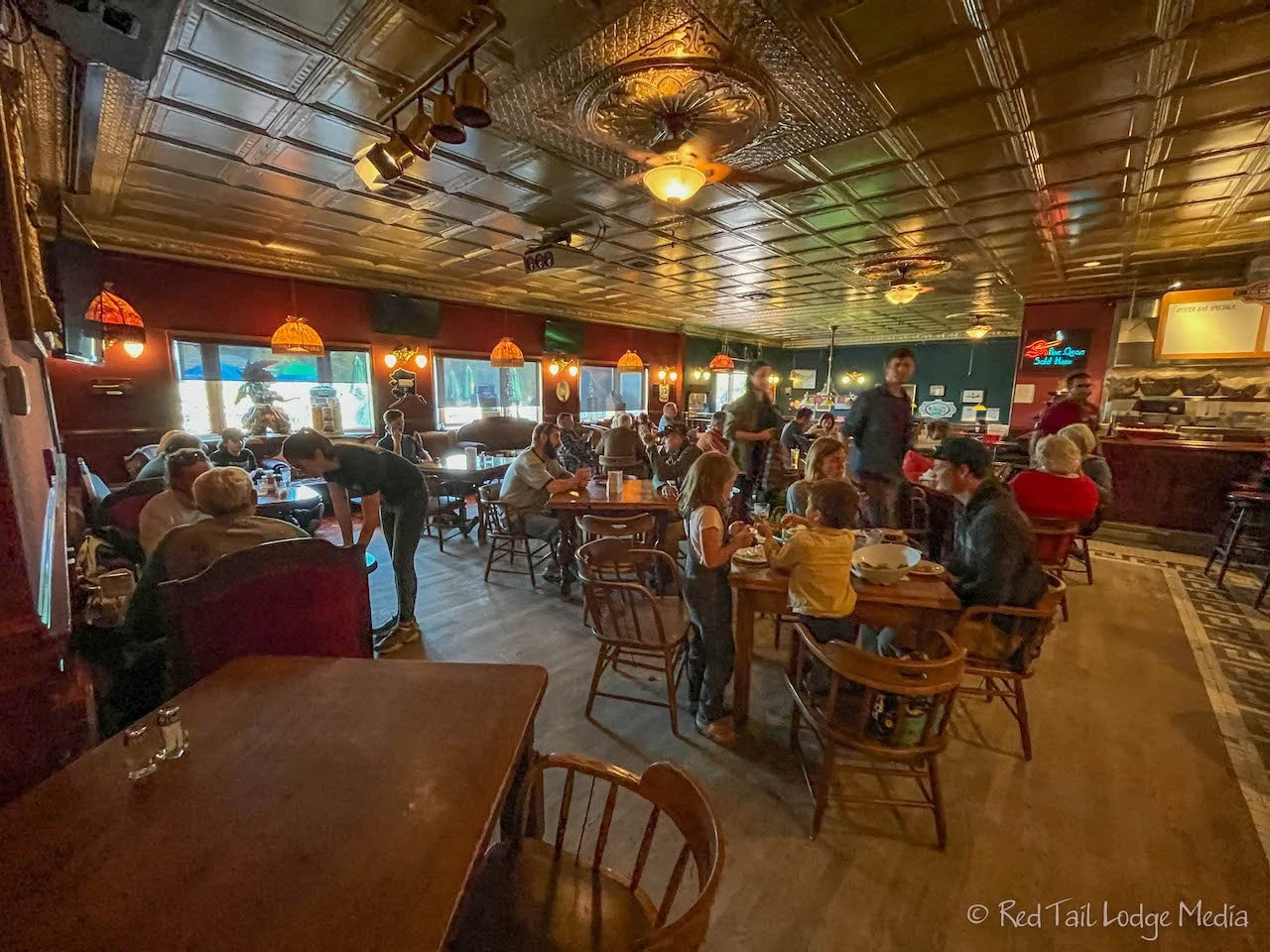Fairbanks, Alaska - August 15th to 19th, 2022
This was our second visit to Fairbanks. During our first quick stop in Fairbanks, all we saw was Pioneer Park (Pioneer Park, Fairbanks, Alaska - July 31st to August 1st, 2022). This time we managed to hit most of the highlights during our five day stay, along with time to just relax.
Monday we drove from Talkeetna to Fairbanks. It’s a long drive, for us anyway, and it took most of the day. It rained part of the way there.
For lunch, we stopped at Riley Creek Day Use Area in Denali National Park for a picnic. For dessert, we headed over to the Boardwalk Mall in Denali Park. Ann remembered that Miller’s Gourmet Popcorn had fireweed ice cream when we were in Denali National Park a few days earlier (Denali National Park: Savage River, Alaska - August 9th to 12th, 2022). Since she was unimpressed by Shirley’s fireweed ice cream in Talkeetna (Talkeetna, Alaska - August 13th to 14th, 2022), she thought she’d give Miller’s a try. However, they were out of fireweed ice cream. Instead, we went next door to Black Bear Coffee House for a chai. But they were out of chai. We settled for London fogs and a slice of banana bread. Not exactly what we were looking for, but it was still satisfying.
The closer we got to Fairbanks, the warmer the temperatures got. We arrived at River’s Edge RV Park around 3 pm. We had an arctic circle tour booked for the next morning. When we were on the phone with the Northern Alaska Tour Company the day before, they thought that River’s Edge could shuttle us over to the airport to meet our tour. River’s Edge also runs a hotel and cabin rentals next to the RV Park. The RV Park Office said we could arrange for a shuttle over at the hotel. Sure enough. So we signed up for a 9 am bus to be there by our 9:15 check in time.
We even had time to take showers before dinner. It felt so nice outside. Of course, just as we were about to cook dinner outside, a rain storm came through. However, it didn’t last long and we were able to wait it out and cook afterwards. But, Ann had left her camp chair outside so it got wet, even though she had stashed it under the picnic table.
Tuesday was the long ride to the Arctic Circle. The shuttle took us from the River’s Edge Hotel over to the Northern Alaska Tour Company office at the airport. After a short briefing, ten of us boarded the 25 passenger tour coach. The seats were very comfortable, with more than enough leg room for Ann’s long legs. Since there were only ten of us, we each got a seat by a window. The windows were also large, so we had great views. We departed some time before 10 am.
The Arctic Circle is about a five hour drive from Fairbanks, assuming good weather and road conditions. Heading north out of Fairbanks, the drive starts out on the paved Elliott Highway. Even though it was paved, it had plenty of dips and pot holes. After about 80 miles or so, you then turn onto the Dalton Highway to continue up to the Arctic Circle. The Dalton Highway goes all the way up to Deadhorse at Prudhoe Bay on the Arctic Ocean, but we were not going that far. The Dalton Highway is the one that is featured on the Ice Road Truckers TV show.
As we were leaving Fairbanks, our bus driver pointed out a water fill station. Many of the locals live in cabins without running water. The cheapest way for them to get water is filling up containers at a water fill station. Our bus driver is one of those people. He and his wife are homesteaders in a cabin with electricity, but no running water.
We made several short stops on the way up to the Arctic Circle. The first stop was a couple of hours into the drive at the Arctic Circle Trading Post, before reaching the Dalton Highway. The trading post is not in operation, but it was an opportunity to stretch our legs, see a homestead, and use the outhouses.
The next stop was after we turned onto the Dalton Highway. The Trans-Alaska Pipeline runs alongside the highway, but it is out of view most of the time. We stopped at a point where it is close to the highway, where we could walk over to it. We were able to touch the plates that rest on the supports. The pipeline is not attached to the supports so it is free to expand and contract. The length of the pipeline actually changes by up to five miles over the course of a year.
The Dalton Highway crosses the Yukon River, the only bridge over the Yukon in Alaska. The river is quite wide at this point and the bridge is half a mile long. There are only four bridges across the Yukon River, with the other three in the Yukon Territory of Canada.
A couple of hours after our pipeline stop was our stop at the Yukon River Camp for a late lunch. You are allowed to bring your own food and drinks with you, but we opted to purchase our lunch from the Yukon River Camp. When we checked in for our tour that morning, we placed our sandwich orders, so they were waiting for us when we arrived. There were plenty of items to supplement the cold sandwiches, such as bags of chips, snack bars, fresh fruit, and cans of soda. After half an hour to eat lunch and use the bathroom, we were back on the road again.
From the highway, there are large, expansive views of the surrounding wilderness. Monday was a pretty clear day, so visibility was pretty good. Most of the drive is through the boreal forest, with black and white spruce trees, aspen, birches, and a few cottonwood trees. Sometimes the trees would give way to wetland tundra, with just grasses and bushes. You would think with such wide-open views of the surrounding area that you could spot wildlife. We did not see any the whole day other than a few birds. No bears. No caribou. No muskox. No moose.
The next stop was at Finger Mountain. This was Ann’s favorite stop. There was a short path from the rest area up to a craggy, rocky area surrounded by a colorful variety of alpine tundra plants. The plants were already donning their autumn colors. The mountain is named for one of the rocky outcroppings near the summit that sticks up tall like a finger.
From there, it was not long before we reached the Arctic Circle. It didn’t really look that much different than the scenery we had been looking at for hours. There was a sign and some outhouses. Our bus driver pulled out a red carpet, helped take pictures of everyone in front of the sign, and handed out our certificates. Then we waited for half an hour for the van to show up with the people who will be riding back with us. They flew out to the circle and took the tour bus back. That meant we had to double up our seats and no longer had the luxury of each person having a window seat.
We didn’t make as many stops on the way back. The first one was just alongside the road where some of us followed our bus driver out onto the boggy tundra. Our guide dug a small hole, about a foot and a half deep, to reach the permafrost. Many of us reached down into the hole to feel it. It was hard as rock and cold as ice, because it was a solid layer of frozen dirt. We managed to keep our feet dry walking out there, but others were not as lucky and got their feet wet. Our tour driver was kind enough to chip out a piece of permafrost and bring it back to those who chose not to come out onto the tundra so they could touch it.
It was 8 pm by the time we returned to the Yukon River Camp. This time we had an hour to have dinner. This allowed us time to order some hot food. They had burgers, fries and chili, along with other items like pie and ice cream. We both had a burger. Ann opted for the sweet potato fries instead of the waffle fries. For dessert, we both had cherry pie and ice cream. It was not the best food we’ve ever eaten, but it was tasty and more than enough to fill us up.
Normally they encourage you to walk down to the river from the Yukon River Camp during one of your stops there. However, there were two bears that had been hanging out in the area, so they strongly discouraged it. We listened to their advice and did not go. However, one adventurous soul from our group did. He was from Romania. Hopefully, he understood the risk, as his English was not very good. He showed up for dinner in one piece, so all was well.
Now it was just a long drive back to Fairbanks as the light faded. Sunset was around 10 pm, but clouds had rolled in during the evening, so it seemed pretty dark. Everyone seemed to be dozing off, or trying to as they were bounced and jolted around by the rough roads. Thank goodness those seats were comfortable. It was about 1:30 am by the time our tour bus dropped us off at the River’s Edge RV Park. It was a long day and we went straight to bed.
We definitely would not recommend driving your own vehicle on the Dalton Highway. The road would put a lot of wear and tear on any vehicle. The chances of getting a flat tire or broken windshield are pretty high. Plus it would be a very tiring drive. The road conditions were pretty good when we were on it, but give the road a little moisture to make it slippery and a little fog to decrease visibility and it could be a very frightening experience. The shoulders are pretty soft, so it would be easy to pull over too far when letting someone pass and getting yourself stuck. There is no cell service. Our driver was on the CB radio constantly, warning other drivers when he was entering and exiting the highway and communicating with others that he was slowing down and moving over to let them pass. He gave truckers the right of way. Many people do drive it. On our return trip, there was a vehicle off in the ditch and someone was winching him out. If you do drive it, be aware there are no services along the road. The Yukon River Camp is about it. There are no gas stations, no stores, just a few rest areas with outhouses. We did pass one primitive campground. You are definitely on your own.
So was it worth it? That’s up to you to decide. The trip did give us a sense of how large and vast the Alaskan wilderness is. Is there stunning scenery that we haven’t seen already elsewhere? No. Our tour bus driver told interesting stories about his life as an Alaskan homesteader. Could we have found a book to provide us with similar stories? Probably. If time and/or money is an issue, going to the Arctic Circle would probably be the first thing we would eliminate from the list of things we have done so far in Alaska.
Wednesday was a lazy day for us. After sleeping in, we hung around the campground until after lunch. Then we were off to the grocery store for a resupply run.
In the afternoon, we swung over to the Fountainhead Antique Auto Museum. We’re not big museum people, but this one is nicely done. We didn’t spend a lot of time there, but we did find it very interesting. The vehicles on display start out with bicycles and motor bikes from the early 1900’s, then progress up through all kinds of automobiles to the 1930’s. Each vehicle is paired with vintage clothing, mostly women’s high fashion, from the same time period. In addition to gasoline powered autos, there is also an assortment of electric and steam powered ones.
Each vehicle had an informational sign listing the specifications and history of it. They had several automobiles that were manufactured in Toledo, Ohio, where we grew up. There were so many auto manufacturers that we had never heard of before. Yes, we traveled all the way to Alaska to learn some history about our home town back in the lower 48.
Part of our reason for staying in Fairbanks was to have a chance to see some northern lights. It is a little early in the season, but not impossible this time of year. Sunset is still around 10 pm and we still are not having true darkness overnight. But, the Kp index, according to the Aurora Forecast by the Geophysical Institute at the University of Alaska (www.gi.alaska.edu/monitors/aurora-forecast), was above 4 for the next two nights. That meant the aurora would be active. However, we still needed a clear view of the northern sky without much light pollution. Our research said two good places to view the aurora borealis near Fairbanks are the Chena Lake Recreation Area and Creamers Field.
We drove out to Chena Lakes Recreation Area to check it out. Along the way, we stopped at the Santa Claus House in North Pole for an ice cream cone and root beer float from their gift shop. After taking a peek at the reindeer and the large Santa statue, we continued our drive.
The swim beach area in Chena Lakes looked like a perfect spot for viewing the northern lights. However, the day use area closes at 10 pm and the gates to the area are locked over night. OK, maybe we’ll try Creamers Field instead.
The aurora forecast may have been good, but the weather forecast was not. The clouds rolled in and there was a chance of rain showers starting around 11 pm. You need three things to see the northern lights: aurora activity, dark skies, and clear skies to the north. Only having one of the three was not good, so we went to bed instead. We were tired from going to bed late the night before. We’ll see what Thursday night looks like.
Thursday morning we did our laundry, then took the Riverboat Discovery cruise in the afternoon. The cruise costs $75.95 per person, but we were able to get a BOGO (buy one, get one free) using our Alaska Tour Saver app. The cruise was definitely worth the money.
The cruise is very touristy, but also very well done. It is on a large paddle wheel riverboat that holds 900 passengers. The cruise is short, going about three to four miles along the Chena River from just west of route 3 to where the Chena River flows into the Tanana River. However, the trip lasts about three hours.
There are three main attractions along the narrated route. The first is a sea plane demonstration where a pilot lands on and takes off from the river right next to the boat. It is impressive how little space is needed for the plane to land and take off.
The second attraction is a dog sled demonstration at the Trail Breaker Kennel. The kennel was started by Susan Butcher, a four-time Iditarod champion, and her husband, David Monson, a Yukon Quest champion in 1976. The kennel is still run by David Monson and his two daughters. The people on the riverboat watch the demonstration from the boat. We were on the top deck and had a wonderful view.
We disembarked the boat for the final attraction, the Chena Village Living Museum. The village consists of some original buildings that were moved to this location along with some reconstructions. First, we were led around in groups to three of the main areas where native guides described the way of life for the Athabaskan people in the area, both before western influence and after. Then we had some time to wander around on our own.
On the cruise back, they served us smoked sockeye salmon with cream cheese on crackers. Of course, the free food was trying to entice you to buy cans of the salmon, but it was a tasty treat all the same.
When we were debating about driving up to Creamers Field to see the northern lights, the weather did not look good again. Instead, we decided to set our alarm for 12:30 am and again for 2:30 am to see if we could see anything from the campground. At 12:30 am, it was raining. At 2:30 am, the sky was overcast with clouds. We’re glad we didn’t stay up and drive somewhere. Hopefully we’ll get another chance to see the aurora later in our trip. We were getting a little jealous of others posting aurora pictures on Facebook at other locations in Alaska and Canada from the past two nights.
Friday we went for a hike. We drove out Chena Hot Springs Road to Chena River State Recreation Area. The trees were starting to take on their fall colors. The fireweed blossoms were gone. We heard that the fireweed starts blossoming near the bottom of the stalk, then the blossoms progress up the stalk during the summer. When the blossoms reach the top of the stalk, then it is time for fall.
Our hike for the day was at mile 48.9, the Angel Rocks Trail. It was a little over an hour’s drive from our campground in Fairbanks. This is one of the fee areas inside the recreation area. It cost $5 to park for the day. There are pay stations that take credit cards at all the fee areas. It was about noon by the time we reached the trailhead, so we ate our lunch in the our Red Tail Lodge (our camper van) before starting our hike.
The trail was wonderful. It had quite a variety of terrain and nice views from the summit. The trail starts out alongside a creek. Not far into our hike, there were three spruce grouse crossing the trail. We stopped and watched them for a little while, giving them a chance to move on at their own pace, so as not to disturb them. The squirrels did not appreciate us hanging out there. They were scolding us and dropping spruce cones from the trees. Luckily, we were either too far away from them or they do not have good aim, because none of the cones came close to hitting us.
The trail is called a loop, but it is more of a lollipop. We followed the loop part in the counterclockwise direction. At the beginning of the actual loop, there is a boardwalk to lead you across an open marshy area. Then the trail starts to climb. There are several rock outcroppings with views along the way to the summit, so if you don’t want to hike the whole trail, you could turn around at one of the outcroppings and still have a nice hike. Just before the high point, the trail splits. The one to the right continues on to Chena Hot Springs, which is over 8 miles from the trailhead. That’s a lot farther than we care to hike in one day, so we stayed on the Angel Rocks Trail.
When we reached the top, there was a rainbow waiting for us. We had a mixture of clouds and sun along with some drizzly rain on the way up. A couple of birds flew overhead. One was harassing the other. One was squawking, but we couldn’t tell if the one making the noise was the chaser or the one being chased. We couldn’t make out what type of birds they were, either.
Near the top, we found some lingonberries, so we picked some to enjoy later. As we started to descend, we managed to lose the marked trail and started following a social trail. Thank goodness we were using AllTrails to track our progress and realized our mistake. However, while we were off the main trail, we found a patch of blueberries, so we picked some of those as well. The trail is marked periodically with orange ribbon and/or little tiny yellow signs.
By the time we returned to our Red Tail Lodge, we had gone 4.1 miles with an elevation gain of 1257 feet in about three hours, including our short spur down the wrong trail. We counted it as hike number 34 of our 52 Hike Challenge for 2022.
On the way to the trailhead earlier that morning, Ann caught a glimpse of a trumpeter swan in a pond alongside the road. She took note of the mile marker so we could stop on our drive back to see if the swan was still there. As we pulled off the road, not only was the swan still there, but we noticed another animal in the water, a moose! Bonus! A few other people were also there, watching the moose through their binoculars. We stayed for a little while, chatting with the other people, and hopefully getting some great shots and video of the cow moose and the trumpeter swan. As an added bonus, not long after we left the pond, a cow moose ran across the road in front of us.
We tried stopping at the Sliver Gulch Brewery in Fox, but it was closed, so we headed back to Fairbanks and went to the Pump House Restaurant for dinner. You can see the restaurant from the Riverboat Discovery cruise. It is in the historic Chena Pump House that was used to pump water up to the gold dredges on Cripple Creek. The restaurant is lovely inside, furnished with many antiques. We arrived around 6 pm and the place was packed. We did not have reservations. There was not an available table in the dining room until 8 pm. However, the tables in the bar area were first come/first serve and they have the same menu.
We were able to snag a table just as a group was leaving. The surf and turf menu is a little pricey, but it is a nice atmosphere. We both had the reindeer medallions which were delicious. The desserts were even better. It was hard to pick from the tray of about a dozen choices. Ann had the chocolate mousse pie while Keith had the apple pie with caramel ice cream. Simply scrumptious.
We didn’t see an aurora like we hoped, but we saw just about everything else on our wish list. However, we never did make it up to Creamers Field. Other people have posted nice pictures of lots of sandhill cranes at Creamers Field from about the same time period. Darn! We’ll just have to come back to Fairbanks someday.
Check out our related video: Fairbanks, Alaska
(Ann)





